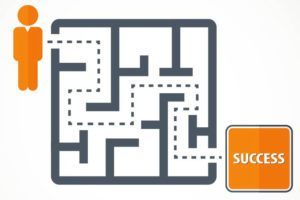Business Planning
 A business plan is like a roadmap -- it outlines goals for your business and details a path to achieve those goals. If you are starting your own business, you will need to write a comprehensive business plan, especially if you are going to need outside financing. Let's look at the basic parts of the business plan.
A business plan is like a roadmap -- it outlines goals for your business and details a path to achieve those goals. If you are starting your own business, you will need to write a comprehensive business plan, especially if you are going to need outside financing. Let's look at the basic parts of the business plan.Executive Summary
This is the most important part of your business plan. The executive summary is a brief snapshot of your business concept and is the first impression you make with potential lenders. It is common for investors to read the executive summary and decided if they are interested in reading the rest of your plan.
The executive summary should answer the following questions:
- What will your company do?
- Who is your management team and are they capable and experienced?
- Is there a market for your product or service?
- Who are your target customers?
- What advantage or unique factor do you have compared to your competition -- do you bring something new to the market?
- What is your legal structure – LLC, S-Corporation, Sole Proprietorship?
Often the executive summary is written last, after you have worked through the other parts of your business plan and can summarize them.
Products and Services
Identify the specific types of products or services you will provide. Describe your industry and make note of changes or trends that you can take advantage of. The library’s database Small Business Reference Center is a great resource for industry information. Most industries do their own research and have trade publications, which will save you a lot of time and frustration. To find trade publications, go to another of the library’s databases, Business Source Premier. Most of the organizations would be glad to send you a copy.
Market Analysis
You need to know your target market—the types of customers you are looking for. Use this section to discuss your customers’ needs, where your customers are, how to reach them and how to deliver your product to them.
Once you have identified your target market, you’ll need to know who your competitors are and determine if there’s room for you in this market. To answer this question, you need to find the demographics of your market area. A couple of very good resources for demographics are
- census.gov Access information about people, businesses and trade
- Kansas Statistical Atlas Breaks down demographics to the geographic tract level so you know exactly where your target market is located. (Available for all states and metro areas)
Information on competitors can be found in the database Reference USA.
Management Structure
This section describes the people who will be running your business. Be sure to address the following for each individual:
- Their role in your company
- The experience and/or education that qualifies them for the job
If yours is a very small business, use this section to highlight your own qualifications. You might also add the names of your lawyer or accountant as key advisors. Remember, potential investors want to see that you know what you’re doing.
Financials
If you are a start-up business, you’ll have to determine the following:
- Capital expenditures
- Break-even analysis
- Inventory
- Cash flow projection
You will also need to know the norm in your industry regarding financial ratios, such as your profit margin, return on capital, etc. Ratios vary widely between industries, so you need to know what to expect financially. You should consult the RMA's Annual Statement Studies to find the appropriate ratios for your industry.
The business plan is not just for business startups. Existing businesses can benefit from creating a business plan to monitor expenses, work flow, assess their market, and benchmark their success. The steps are the same, but it should be somewhat easier because the pieces are already in place.
You can learn more about business plans at the above links, or from one of the following books:
loading...













